The fashion industry is at a critical crossroads! Did you know that textile production creates more greenhouse gas emissions than international flights and maritime shipping combined?
Choosing eco-friendly clothing isn’t just a trend—it’s a powerful way to reduce your environmental footprint and support sustainable practices.
In this comprehensive guide, I’ll walk you through everything you need to know about selecting clothing brands that prioritize both style and sustainability.
Let’s dive deep into the world of sustainable fashion and unpack what truly makes a clothing brand eco-friendly!
Understanding Sustainable Fashion: What Makes a Clothing Brand Truly Eco-Friendly?
Sustainable fashion isn’t just a buzzword—it’s a revolution transforming how we think about clothing! Imagine your wardrobe as a powerful tool for environmental change, where every garment tells a story of responsibility, innovation, and hope.
What is Sustainable Fashion?
Sustainable fashion is a holistic approach to clothing that considers the entire lifecycle of a garment—from the moment raw materials are sourced to the ultimate disposal or recycling of the piece. It’s not just about creating beautiful clothes, but about creating clothes that love our planet as much as we do.
Key Environmental Impact Areas in Clothing Production
The fashion industry is a hidden environmental heavyweight, responsible for:
- 10% of global carbon emissions
- Massive water consumption
- Significant textile waste
- Chemical pollution from production processes
| Environmental Impact | Traditional Fashion | Sustainable Fashion |
|---|---|---|
| Water Usage | Up to 2,700 liters per cotton t-shirt | Recycled water systems, organic materials |
| Carbon Emissions | High petroleum-based material use | Low-carbon production, renewable energy |
| Waste Generation | Approximately 92 million tons annually | Circular design, recycling, upcycling |
Greenwashing vs. Genuine Sustainability: Spotting the Difference
Let’s get real—not all “eco-friendly” claims are created equal! Greenwashing is like putting a band-aid on a broken system, while genuine sustainability is about fundamental transformation.
Red Flags of Greenwashing:
- Vague environmental claims without specific data
- Pretty packaging with no substantial change
- Minimal sustainable practices while marketing heavily as “green”
Markers of Genuine Sustainability:
- Transparent supply chain
- Measurable environmental goals
- Third-party certifications
- Continuous improvement in practices
- Fair labor conditions
- Investment in innovative sustainable technologies
The Heart of Sustainability: Transparency in Fashion Manufacturing
Transparency is the soul of sustainable fashion. It’s about opening the curtains and showing exactly how clothes are made, who makes them, and what impact they have.
Why Transparency Matters:
- Allows consumers to make informed choices
- Holds brands accountable
- Drives industry-wide improvement
- Protects workers’ rights
- Reduces environmental harm
How to Assess a Brand’s Transparency:
- Look for detailed sustainability reports
- Check for clear information about material sourcing
- Verify labor practices and working conditions
- Seek brands that share their carbon footprint
- Investigate certifications and third-party audits
The Emotional Connection: Your Power as a Consumer
Every clothing purchase is a vote for the kind of world you want to live in. When you choose sustainable fashion, you’re not just buying a piece of clothing—you’re supporting a vision of a more responsible, compassionate fashion industry.
Your Action Steps:
- Research brands thoroughly
- Ask questions about their sustainability practices
- Support brands making genuine efforts
- Invest in quality over quantity
- Consider second-hand and vintage options
Pro Tip: Sustainable fashion isn’t about being perfect. It’s about making progressively better choices and understanding that every small decision counts.
The Future is Circular: Reimagining Fashion
The most exciting part of sustainable fashion? It’s constantly evolving! Innovative technologies like biodegradable fabrics, zero-waste design, and circular economy models are reshaping how we think about clothing.
Sustainable fashion is more than a trend—it’s a movement, a commitment, and a powerful way to express your values through the clothes you wear. Are you ready to be part of this beautiful revolution?
You don’t have to be perfect. You just have to be better than you were yesterday.
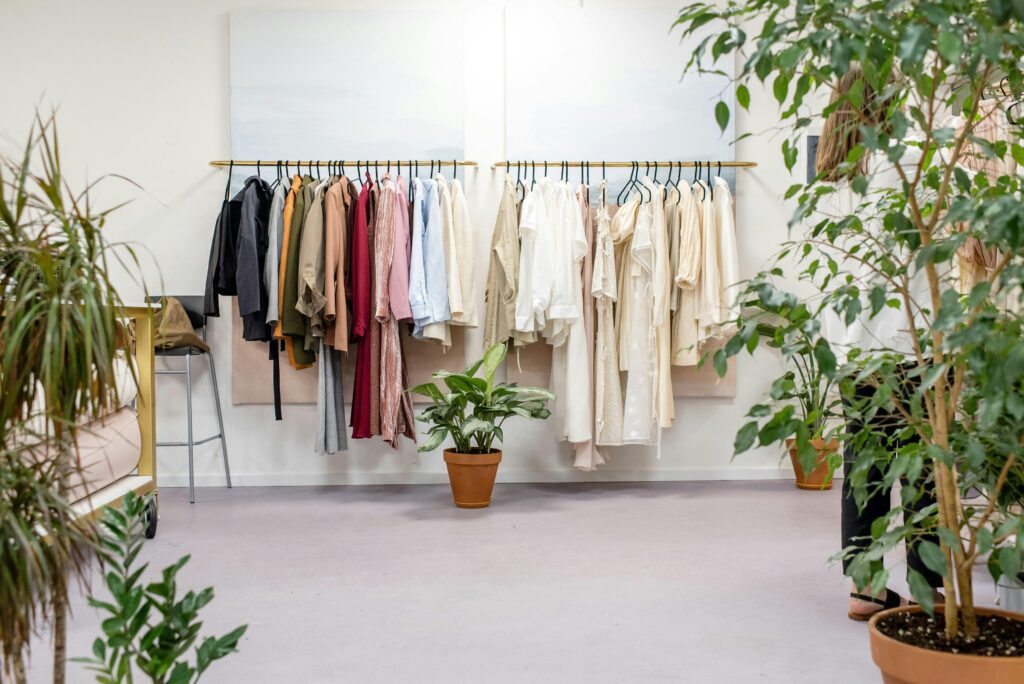
Evaluating Fabric Choices for Environmental Responsibility: A Deep Dive into Sustainable Textiles
Have you ever wondered about the hidden environmental story behind the clothes hanging in your closet?
Fabric choices are the heartbeat of sustainable fashion, and today we’re pulling back the curtain on the incredible world of textile sustainability!
The Textile Battlefield: Natural vs. Synthetic Fabrics
Imagine fabrics as environmental warriors, each with their own ecological footprint. The battle lines are drawn between natural and synthetic materials, and the stakes? Our planet’s health.
Natural Fabrics: Earth’s Gentle Embrace
Natural fabrics are like the superheroes of sustainable fashion—but they’re not without complexity:
| Fabric Type | Environmental Impact | Sustainability Score |
|---|---|---|
| Organic Cotton | Low pesticide use, biodegradable | ★★★★☆ |
| Hemp | Minimal water, no pesticides, rapid growth | ★★★★★ |
| Wool | Renewable, biodegradable, but methane concerns | ★★★☆☆ |
| Silk | Natural protein fiber, but intensive production | ★★★☆☆ |
Synthetic Fabrics: The Environmental Challenge
Synthetic fabrics are like uninvited guests at an environmental party:
- Derived from petroleum
- Non-biodegradable
- Microplastic shedding
- Long decomposition times (500+ years!)
The Sustainability All-Stars: Top Eco-Friendly Fabric Options
1. Organic Cotton: Not All Cotton is Created Equal
- Uses 91% less water than conventional cotton
- No harmful pesticides
- Supports soil health
- Protects farmer communities
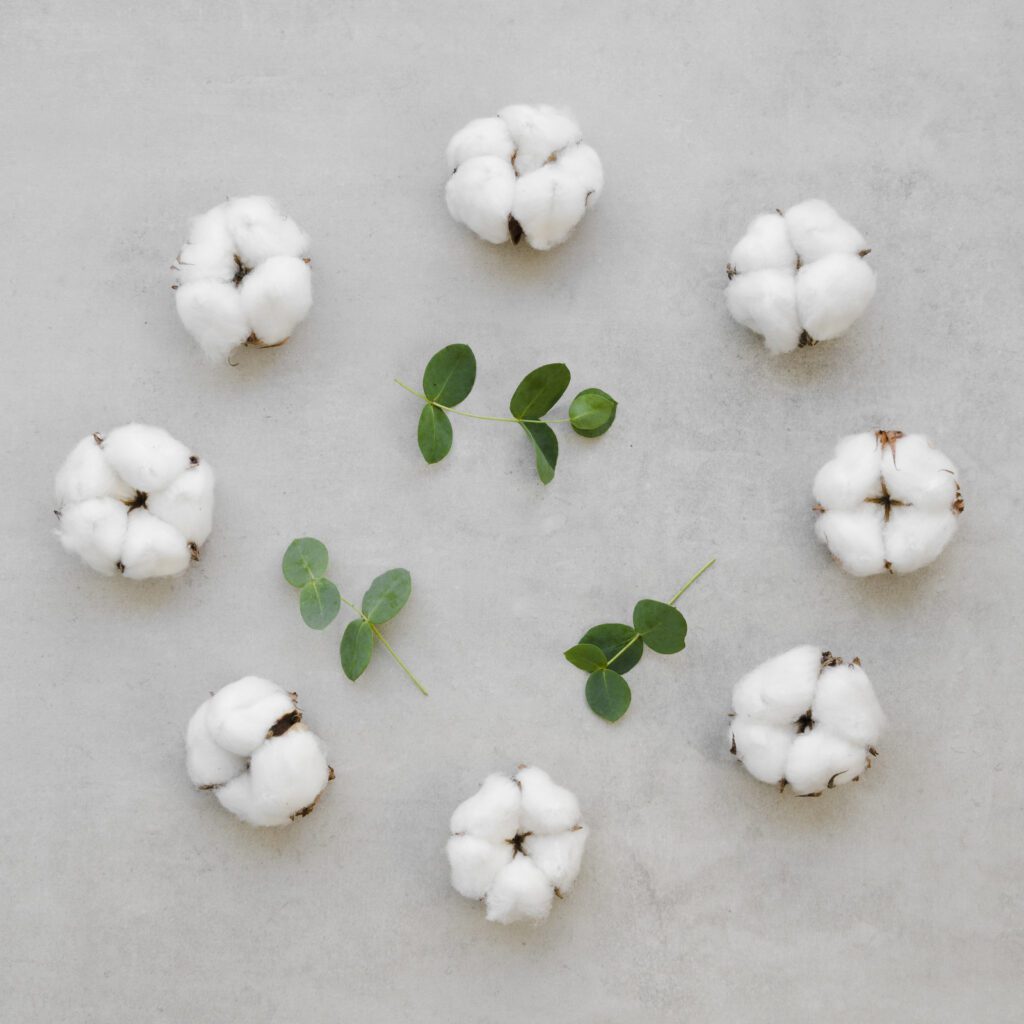
2. Hemp: The Miracle Fabric
Prepare to be amazed! Hemp is the Chuck Norris of sustainable fabrics:
- Grows in diverse climates
- Requires minimal water
- No pesticides needed
- Regenerates soil health
- Produces more fiber per acre than cotton
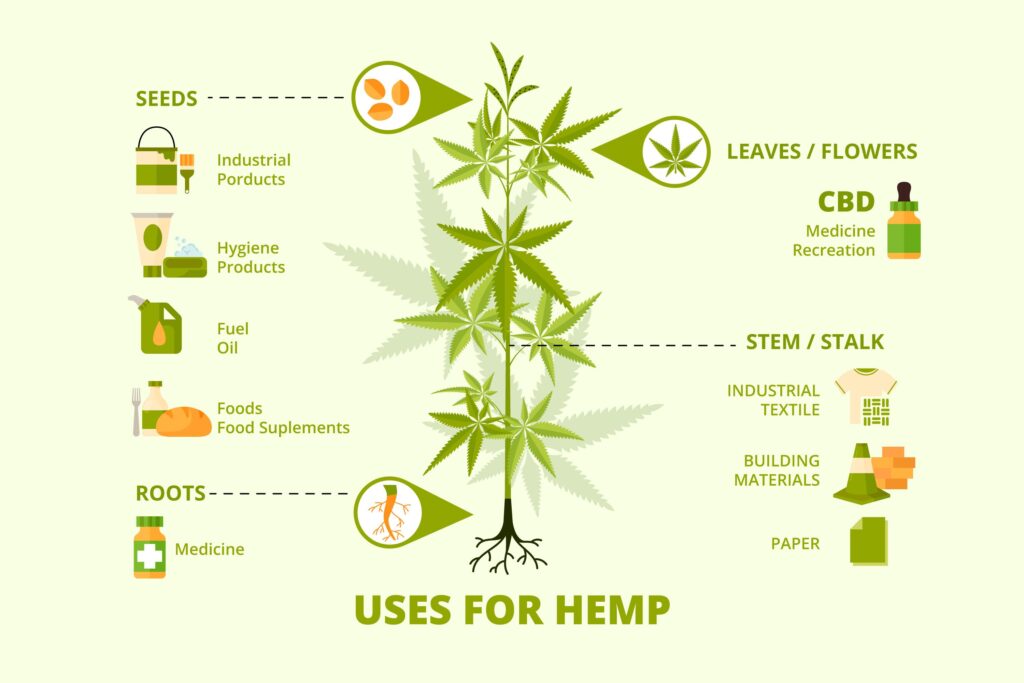
3. Recycled Materials: Giving Waste a Second Life
Imagine turning plastic bottles into a stylish jacket! Recycled materials are revolutionizing fashion:
- Reduces landfill waste
- Decreases virgin material production
- Lower carbon emissions
- Innovative and constantly improving technologies
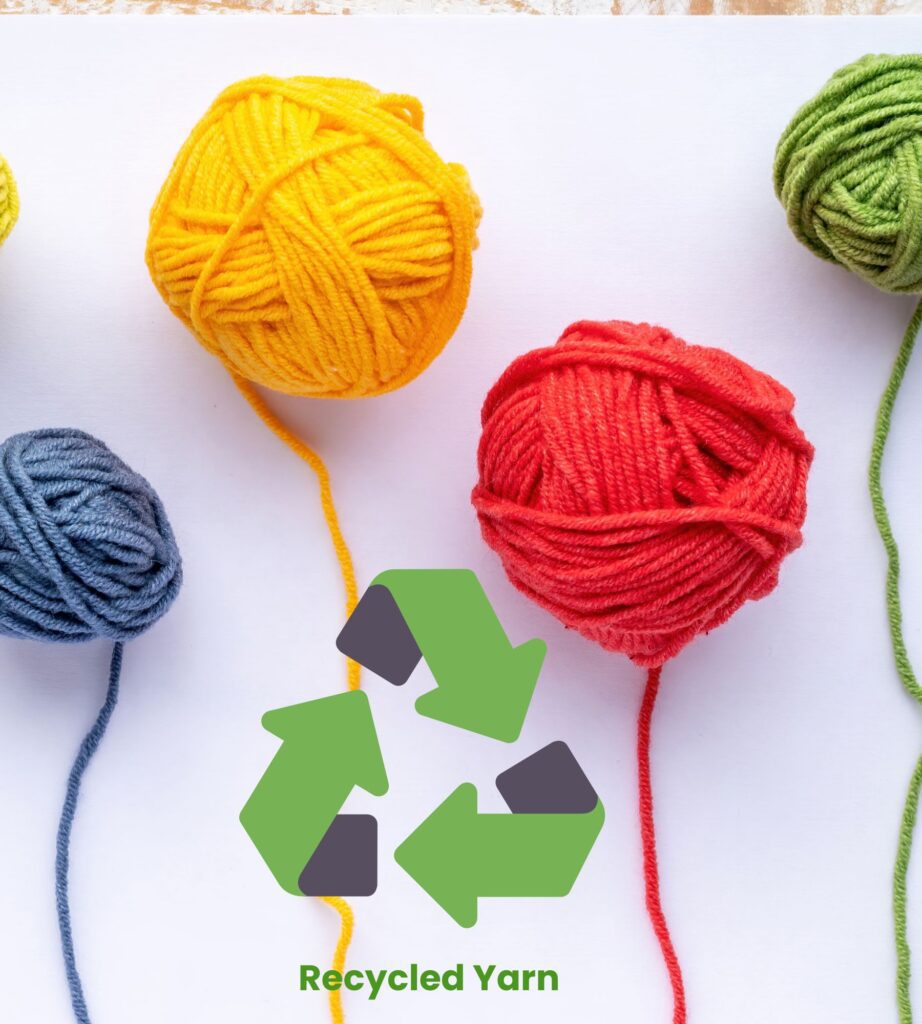
The True Cost: Environmental Production Analysis
Let’s talk numbers that will blow your mind!
Water Usage Comparison
- Conventional Cotton: 2,700 liters per t-shirt
- Organic Cotton: 243 liters per t-shirt
- Recycled Cotton: 90 liters per t-shirt
Carbon Footprint Breakdown
- Polyester: High petroleum dependency
- Organic Hemp: Carbon negative potential
- Recycled Polyester: 59% lower carbon emissions
Emerging Sustainable Fabric Technologies: The Future is Now!
Get ready for some mind-blowing innovations:
- Mycelium Leather: Clothing grown from mushroom roots
- Fruit Leather: Shoes and bags made from pineapple and apple waste
- Seaweed Fiber: Biodegradable textiles from ocean resources
- Bioengineered Silk: Produced without silkworms
- Algae-based Fabrics: Renewable and carbon-capturing


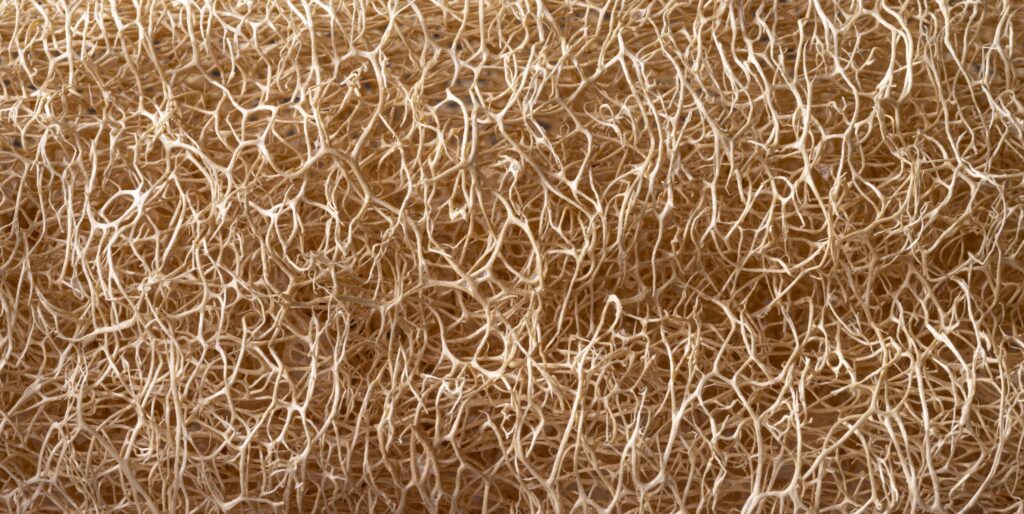
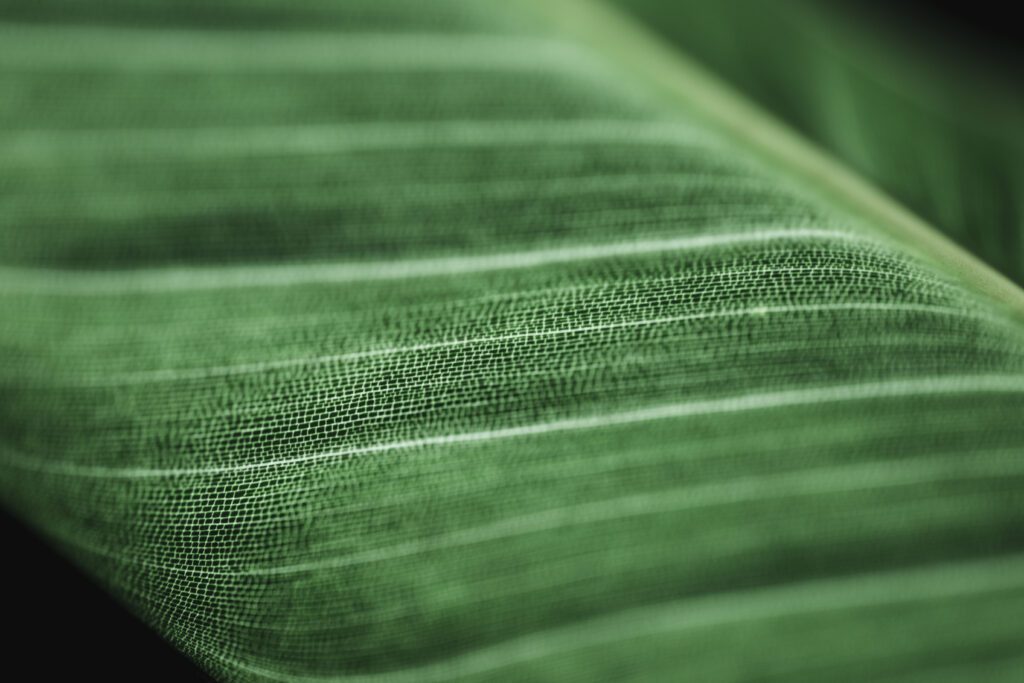

Lifecycle Analysis: From Birth to Farewell
Every fabric has a story, and here’s how they end:
- Organic Cotton: Biodegrades in months
- Synthetic Polyester: Remains in landfills for centuries
- Recycled Materials: Can be continuously regenerated
Pro Tip: Your clothing choice is a vote for the planet. Choose wisely!
Making Sustainable Choices: Your Personal Impact
It’s not about being perfect—it’s about being better. Each sustainable fabric choice:
- Reduces water consumption
- Minimizes chemical pollution
- Supports ethical manufacturing
- Fights climate change
Quick Consumer Guide
- Check fabric labels
- Research brand sustainability
- Prioritize quality over quantity
- Consider second-hand options
- Learn and spread awareness
The Emotional Connection: Beyond Statistics
Sustainable fabrics aren’t just about numbers—they’re about hope. They represent our collective commitment to a healthier planet, fairer working conditions, and a more compassionate fashion industry.
Your wardrobe can be a powerful statement of love—love for the environment, for workers, for future generations.
Are you ready to weave a more sustainable future, one fabric at a time?
The journey to sustainable fashion starts with understanding. And now, you’re armed with knowledge that can change the world!
Certifications and Standards in Sustainable Fashion: Your Roadmap to Conscious Clothing Choices
Hold onto your hangers, conscious consumers! We’re about to demystify the world of fashion certifications—your secret weapon in navigating the complex landscape of sustainable clothing.
Why Certifications Matter: More Than Just Pretty Labels
Imagine walking into a store where every label tells a story of environmental responsibility, ethical production, and genuine care. Certifications are like trust badges that help you make informed, impactful purchasing decisions.
The Certification Landscape: A Quick Overview
| Certification | Primary Focus | Consumer Impact |
|---|---|---|
| GOTS | Organic Textiles | Guarantees organic materials and ethical processing |
| Fair Trade | Social Responsibility | Ensures fair wages and safe working conditions |
| Bluesign® | Environmental Safety | Validates reduced environmental impact |
| OEKO-TEX | Chemical Safety | Confirms textile safety for human health |
| B Corp | Holistic Sustainability | Verifies comprehensive social and environmental performance |
Diving Deep: Certification Breakdown
1. Global Organic Textile Standard (GOTS): The Gold Standard of Organic Textiles
What Makes GOTS Special:
- Covers entire textile supply chain
- Requires minimum 70% organic fibers
- Strict environmental and social criteria
- Prohibits toxic chemicals
- Mandates safe working conditions
Consumer Translation:
When you see a GOTS label, you’re choosing clothing that’s:
- Environmentally responsible
- Chemically safe
- Ethically produced
- Traceable from farm to final product
2. Fair Trade Certification: Putting People First
Beyond Just a Label:
- Guarantees fair wages for workers
- Prohibits child and forced labor
- Supports community development
- Ensures safe working environments
- Promotes sustainable production practices
What It Means for You:
Every Fair Trade purchase is a direct investment in:
- Workers’ rights
- Community empowerment
- Sustainable economic development
3. Bluesign® Certification: The Environmental Guardian
Environmental Watchdog Features:
- Evaluates chemical safety in textile production
- Reduces water and energy consumption
- Minimizes environmental footprint
- Ensures responsible chemical management
- Promotes sustainable manufacturing
Consumer Benefit:
Bluesign® means your clothing is:
- Produced with minimal environmental impact
- Free from harmful chemicals
- Resource-efficient
- Transparent in production
4. OEKO-TEX Standard 100: Your Health Protector
Human-Centric Certification:
- Tests for harmful substances
- Covers all stages of textile production
- Rigorous chemical safety standards
- Applies to every component of a garment
- Updated annually with latest research
Why It Matters to You:
- Skin-friendly textiles
- Reduced health risks
- Protection for babies and sensitive skin
- Confidence in textile safety
5. B Corp Certification: The Holistic Sustainability Champion
Comprehensive Sustainability Approach:
- Evaluates entire business performance
- Considers social and environmental impact
- Requires continuous improvement
- Transparent governance
- Balances profit with purpose
What Sets B Corp Apart:
- Goes beyond single product considerations
- Assesses entire company practices
- Demonstrates commitment to broader sustainability goals
How to Use These Certifications Like a Pro
Your Certification Navigation Guide:
- Learn the meaning behind each label
- Don’t just look—investigate
- Prioritize brands with multiple certifications
- Ask questions about their sustainability practices
- Stay informed about evolving standards
Pro Tip: No single certification is perfect. Look for brands with multiple credentials and genuine commitment.
The Emotional Core: Your Power as a Consumer
Every certification is a story of hope. It’s a narrative of workers protected, environments preserved, and a fashion industry reimagined.
Your choices matter. Each certified garment is a vote for:
- Environmental preservation
- Ethical labor practices
- Human dignity
- Sustainable innovation
Beyond the Label: Continuous Learning
Certifications evolve. Stay curious, stay informed, and keep challenging the fashion industry to do better.
Remember: Sustainable fashion isn’t about perfection—it’s about progress. One certified garment at a time, we’re weaving a better future.
Are you ready to become a certified sustainable fashion warrior? Your wardrobe is about to get a purpose-driven upgrade!
Top Eco-Friendly Clothing Brands to Consider in 2025: Your Sustainable Fashion Roadmap
Picture this: A wardrobe that looks amazing, feels incredible, and makes the planet cheer! Welcome to the exciting world of sustainable fashion in 2025, where style meets conscience and every garment tells a story of hope.
The Sustainable Fashion Landscape: More Than Just Clothing
Sustainable fashion has evolved from a niche market to a global movement. In 2025, choosing eco-friendly brands isn’t just a trend—it’s a powerful statement of personal values and global responsibility.
Price Ranges: Sustainability for Every Budget
| Budget Category | Price Range | Accessibility | Example Brands |
|---|---|---|---|
| Affordable | $20-$75 | High | Everlane, Pact, Uniqlo Sustainability Line |
| Mid-Range | $75-$250 | Medium | Reformation, Patagonia, Tentree |
| Premium | $250-$500+ | Limited | Stella McCartney, Eileen Fisher |
Leading Sustainable Brands by Specialization
1. Casual Wear Champions
Everlane: Transparency Pioneers
- Radical transparency in production
- Ethical factories worldwide
- Minimalist, timeless designs
- Affordable price points
- Extensive recycled material use
Pact: Organic Comfort Masters
- 100% organic cotton
- Fair Trade Certified
- Carbon-offset shipping
- Zero-waste packaging
- Incredibly soft basics
2. Professional Clothing Innovators
Suistudio: Redefining Workwear
- Gender-neutral professional clothing
- Sustainable wool and recycled materials
- Ethical manufacturing
- Minimalist Scandinavian design
- Size-inclusive collections
Ministry of Supply: Tech-Meets-Sustainability
- Performance professional wear
- Recycled and innovative materials
- 3D printing technology
- Temperature-regulating fabrics
- Circular design principles
3. Activewear Sustainability Leaders
Girlfriend Collective: Inclusive Performance Wear
- Made from recycled water bottles
- Size-inclusive (XXS-6XL)
- Transparent supply chain
- Low-impact dyes
- Circular recycling program
Patagonia: The Gold Standard
- Lifetime repair guarantee
- Pioneering environmental activism
- Recycled and organic materials
- Transparent supply chain
- Commitment to planetary health
Innovative Sustainable Fashion Startups to Watch
Global Trailblazers
- Renewcell: Turning textile waste into new fabrics
- Bolt Threads: Developing mushroom and spider silk alternatives
- Modern Meadow: Biofabricated leather technologies
Local Heroes
- Regional brands focusing on local production
- Supporting community economies
- Reducing transportation emissions
- Preserving traditional craftsmanship
Geographical Diversity in Sustainable Fashion
Global Sustainable Brands
- Reformation (USA)
- Eileen Fisher (USA)
- Stella McCartney (UK)
- Veja (France)
- Thought Clothing (UK)
Regional Sustainable Pioneers
- Indigenous (North America)
- Nau (Pacific Northwest, USA)
- Kotn (Canada)
- Esse (South Africa)
- Mighty Good Basics (Australia)
- Aarong (Bangladesh)
Choosing Your Sustainable Fashion Path
Consumer Decision Framework
- Assess your budget
- Identify your style needs
- Research brand transparency
- Check multiple certifications
- Start with a few key pieces
Pro Tip: Sustainable fashion is a journey, not a destination. Every conscious choice matters!
The Emotional Core: Beyond Just Clothing
Sustainable fashion is a love letter to our planet. It’s about:
- Respecting planetary boundaries
- Valuing human dignity
- Creating beautiful, meaningful clothing
- Reimagining our relationship with fashion
Sustainability Spectrum: Your Personal Impact
Remember: Perfect is the enemy of good. You don’t need to overhaul your entire wardrobe overnight. Small, consistent choices create massive change.
Your Sustainable Fashion Manifesto
- Buy less, choose well
- Invest in quality
- Repair and care for your clothes
- Support transparent brands
- Share your journey
Are you ready to transform your wardrobe—and maybe the world?
Your clothing can be a powerful form of activism, a statement of hope, and a beautiful expression of personal style. Let’s make fashion a force for good!
Practical Tips for Building a Sustainable Wardrobe: Your Ultimate Guide to Conscious Fashion in 2025
Imagine your wardrobe as a living, breathing ecosystem of style, sustainability, and personal expression. Welcome to the transformative journey of building a wardrobe that loves you back—and loves the planet even more!
The Wardrobe Revolution: Where Personal Style Meets Environmental Responsibility
Sustainable fashion isn’t about sacrificing style—it’s about amplifying your unique identity while making choices that heal our planet. Let’s break down how to create a wardrobe that’s as kind to the Earth as it is to your personal aesthetic.
Your Wardrobe Sustainability Scorecard
| Assessment Criteria | Unsustainable | Sustainable | Eco-Champion |
|---|---|---|---|
| Clothing Lifecycle | Disposable | Intentional | Circular |
| Environmental Impact | High | Moderate | Minimal |
| Personal Investment | Low | Medium | Significant |
Step 1: Assessing Your Current Wardrobe – The Closet Excavation
Think of your current wardrobe as a treasure map of personal history and potential transformation. Here’s how to conduct a compassionate closet audit:
The Marie Kondo Meets Sustainability Approach
- Empty Everything Out: Literally everything!
- Sort Ruthlessly:
- Keep: High-quality, versatile pieces
- Repair: Damaged but beloved items
- Donate: Gently used clothing
- Recycle: Worn-out textiles
- Upcycle: Creative potential pieces
Emotional Clothing Inventory
- How many items haven’t you worn in a year?
- Which pieces truly make you feel confident?
- What tells your personal style story?
Pro Tip: Your wardrobe should be a curated collection of pieces that spark joy and serve multiple purposes.
Step 2: Responsible Clothing Consumption Strategies
The Conscious Consumer’s Manifesto
- Quality Over Quantity: One excellent jacket beats five mediocre ones
- Versatility is King: Choose pieces that mix and match
- Invest in Timeless Designs: Trends come and go, style is eternal
- Research Brand Practices: Support transparent, ethical manufacturers
Budget-Friendly Sustainable Shopping
- Thrift and vintage stores
- Clothing swap events
- Online second-hand platforms
- End-of-season sustainable brand sales
- Capsule wardrobe concept
Step 3: Cost-Effective Sustainable Fashion
Breaking the Myth: Sustainable Doesn’t Mean Expensive
- Cost per wear is the real metric
- Higher quality = Longer lifespan
- Reduced environmental cost
- Supporting ethical production
Smart Investment Strategies
- Start with basics
- Choose neutral colors
- Prioritize versatile pieces
- Learn basic repair skills
- Consider second-hand luxury items
Step 4: Extending Clothing Lifespan – The Care Revolution
Eco-Friendly Clothing Care Handbook
- Wash in cold water
- Air dry when possible
- Use gentle, eco-friendly detergents
- Repair before replacing
- Store properly to prevent damage
Repair Skills Everyone Should Know
- Basic sewing techniques
- Patching
- Button replacement
- Minor hem adjustments
- Understanding fabric care labels
Step 5: Recycling and Upcycling – Giving Clothes a Second Life
Textile Recycling Options
- Municipal textile recycling programs
- Brand take-back initiatives
- Specialized recycling centers
- Donation to textile recycling organizations
Creative Upcycling Ideas
- Turn old t-shirts into cleaning rags
- Create quilts from memorable clothing
- Transform jeans into bags
- Develop unique accessories
- Host upcycling workshops
The Emotional Core: Your Wardrobe, Your Statement
Sustainable fashion is a journey of:
- Self-expression
- Environmental stewardship
- Mindful consumption
- Personal growth
Your Sustainable Fashion Mantra
“I choose quality over quantity. I respect the resources that clothe me. My style tells a story of hope.”
The Ripple Effect: Beyond Your Wardrobe
Every sustainable choice:
- Reduces environmental strain
- Supports ethical labor
- Challenges fast fashion
- Inspires others
- Creates systemic change
Are you ready to transform your wardrobe—and maybe the world?
Your clothing can be a powerful form of activism, a statement of hope, and a beautiful expression of personal style. Let’s make fashion a force for good, one thoughtful piece at a time!
The Economic and Environmental Impact of Sustainable Fashion Choices: A Comprehensive Analysis of Fashion’s Future
Imagine your wardrobe as a powerful tool for global change. Every clothing purchase is more than a transaction—it’s a vote for the kind of world you want to create.
The True Cost of Clothing: Beyond the Price Tag
Economic Comparison: Sustainable vs. Traditional Clothing
| Aspect | Traditional Clothing | Sustainable Fashion |
|---|---|---|
| Upfront Cost | Lower | Slightly Higher |
| Lifecycle Cost | Higher | Lower |
| Environmental Cost | Significant | Minimal |
| Social Impact | Negative | Positive |
Breaking Down the Economic Equation
Cost Analysis: The Long-Term Investment
Most people see sustainable clothing as expensive. But let’s do some financial detective work!
Real-World Cost Breakdown
- Traditional $20 T-shirt
- Replacement every 6 months
- Total 5-year cost: $100
- Environmental damage: Immeasurable
- Sustainable $50 T-shirt
- Lasts 3-5 years
- Total 5-year cost: $50-$75
- Positive environmental impact: Priceless
Pro Tip: Calculate cost per wear, not just the price tag!
Environmental Benefits: The Invisible ROI
Quantifying Sustainability’s Impact
Sustainable fashion isn’t just a feel-good story—it’s a critical solution to environmental challenges:
Environmental Savings per Sustainable Garment
- Water Conservation: Up to 90% reduction
- Carbon Emissions: 50-60% lower
- Chemical Pollution: Dramatically minimized
- Waste Reduction: Circular design principles
Ethical Labor: The Human Element of Sustainable Fashion
Beyond Fabric: Supporting Human Dignity
Sustainable fashion represents a holistic approach to production:
- Fair wages
- Safe working conditions
- Community development
- Skill training
- Gender equality
Economic Empowerment Metrics
- 60% of fair trade workers are women
- 85% of earnings reinvested in local communities
- Improved education opportunities
- Reduced child labor
- Enhanced worker healthcare
Economic Incentives for Sustainable Brands
Why Businesses Are Pivoting
- Consumer Demand
- 73% of millennials willing to pay more for sustainable products
- Growing market share for eco-friendly brands
- Increased brand loyalty
2. Investor Attraction
- ESG (Environmental, Social, Governance) investments rising
- Lower long-term risk
- Better financial performance
3. Innovation Opportunities
- New materials development
- Technological advancements
- Circular economy business models
Consumer Power: The Ultimate Change Catalyst
Your Purchasing Decisions Matter
Every dollar is a vote. Every garment is a statement.
Consumer Influence Strategies
- Research brand practices
- Support transparent companies
- Demand accountability
- Share sustainable fashion stories
- Educate your community
The Emotional Core: Beyond Economics
Sustainable fashion represents:
- Hope for our planet
- Respect for human dignity
- Innovative problem-solving
- Collective responsibility
- Personal empowerment
Your Sustainable Fashion Manifesto
“I choose clothing that reflects my values.
I invest in quality over quantity.
My wardrobe tells a story of positive change.”
Economic Transformation: A Glimpse into the Future
Sustainable fashion isn’t a trend—it’s an economic revolution:
- Redesigning global supply chains
- Creating meaningful jobs
- Protecting natural resources
- Challenging traditional consumption models
Are you ready to be part of this transformative journey?
Your clothing choices can:
- Reduce environmental strain
- Support ethical practices
- Drive economic innovation
- Create a more just world
Sustainable fashion is an investment in our collective future. One garment at a time, we’re weaving a better world!
5 Key FAQs on Choosing Eco-Friendly Clothing Brands: Your Comprehensive Guide to Sustainable Fashion
FAQ 1: How Can I Identify Truly Sustainable Clothing Brands?
Identifying genuinely sustainable brands is like solving an ecological mystery. Look for these critical clues:
Red Flags of Greenwashing:
- Vague environmental claims
- Lack of transparency
- No third-party certifications
Sustainability Verification Checklist:
- Multiple Certifications
- GOTS (Global Organic Textile Standard)
- Fair Trade Certification
- B Corp Status
2. Transparent Supply Chain
3. Detailed Sustainability Reports
4. Innovative Eco-Friendly Practices
5. Commitment to Continuous Improvement
Pro Tip: Real sustainable brands don’t just talk—they prove their commitment through comprehensive, verifiable actions.
FAQ 2: Are Sustainable Clothing Brands Actually More Expensive?
The price tag tells only half the story. Let’s do some financial detective work!
Cost Comparison:
- Traditional $20 T-shirt
- Replacement every 6 months
- 5-year total cost: $100
- Environmental damage: Significant
- Sustainable $50 T-shirt
- Lasts 3-5 years
- 5-year total cost: $50-$75
- Environmental impact: Minimal
Economic Breakthrough:
- Lower long-term expenses
- Higher quality materials
- Reduced environmental cost
- Supporting ethical practices
You’re not just buying a garment—you’re investing in planetary health and human dignity.
FAQ 3: How Can I Build a Sustainable Wardrobe on a Budget?
Building a sustainable wardrobe doesn’t require breaking the bank. Here’s your financial roadmap:
Budget-Friendly Sustainable Fashion Tactics:
- Thrift and Vintage Shopping
- Second-hand stores
- Online platforms
- Clothing swap events
2. Capsule Wardrobe Concept
- Versatile, mix-and-match pieces
- Quality over quantity
3. Sales and End-of-Season Deals
4. Learn Basic Repair Skills
5. Invest in Timeless Designs
Money-Saving Mantras:
- Cost per wear > Initial price
- Quality trumps quantity
- Repair before replacing
- Choose neutral, versatile colors
Your wardrobe can be a powerful statement of personal values and global responsibility.
FAQ 4: What Environmental Impact Does Choosing Sustainable Clothing Really Have?
Every sustainable clothing choice creates a ripple effect of positive change:
Environmental Savings Per Sustainable Garment:
- Water Conservation: Up to 90% reduction
- Carbon Emissions: 50-60% lower
- Chemical Pollution: Dramatically minimized
- Waste Reduction: Circular design principles
Broader Impact Metrics:
- Supports regenerative agricultural practices
- Reduces microplastic pollution
- Protects biodiversity
- Challenges harmful industrial practices
Your clothing choices are votes for the kind of world you want to create.
FAQ 5: How Can I Maintain and Care for Eco-Friendly Clothing?
Extending your garment’s lifecycle is an act of environmental love:
Eco-Friendly Care Techniques:
- Washing
- Cold water
- Gentle, eco-friendly detergents
- Full loads
2. Drying
- Air dry when possible
- Reduce dryer usage
3. Storage
- Proper hanging
- Protect from direct sunlight
4. Repair Skills
- Basic sewing
- Patch and mend
- Professional alterations
5. Responsible Disposal
- Textile recycling
- Donation
- Upcycling
Maintenance Mindset:
- Clothing is an investment
- Repair > Replace
- Care creates longevity
Every stitch, every careful wash is an act of planetary care.
Your Sustainable Fashion Journey: A Call to Action
Choosing eco-friendly clothing is more than a trend—it’s a powerful form of personal activism. Each garment represents:
- Environmental stewardship
- Ethical consumption
- Personal style
- Global responsibility
Are you ready to transform your wardrobe—and maybe the world?
Your clothing can be a beautiful expression of hope, a statement of personal values, and a force for positive change. Let’s make fashion a catalyst for a better future!
Conclusion:
Choosing eco-friendly clothing brands is more than a personal style statement—it’s a commitment to our planet’s future. By making informed, conscious choices, we can collectively reduce fashion’s environmental impact, support ethical manufacturing, and create a more sustainable world.
Remember, every garment you choose is a vote for the kind of fashion industry you want to see!
Start your sustainable fashion journey today! Audit your wardrobe, research brands, and make one intentional, eco-friendly clothing choice this month.
If you need assistance to source the sustainable products supplier, please contact me.

